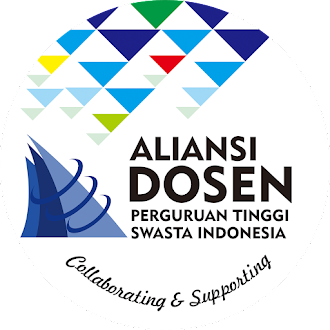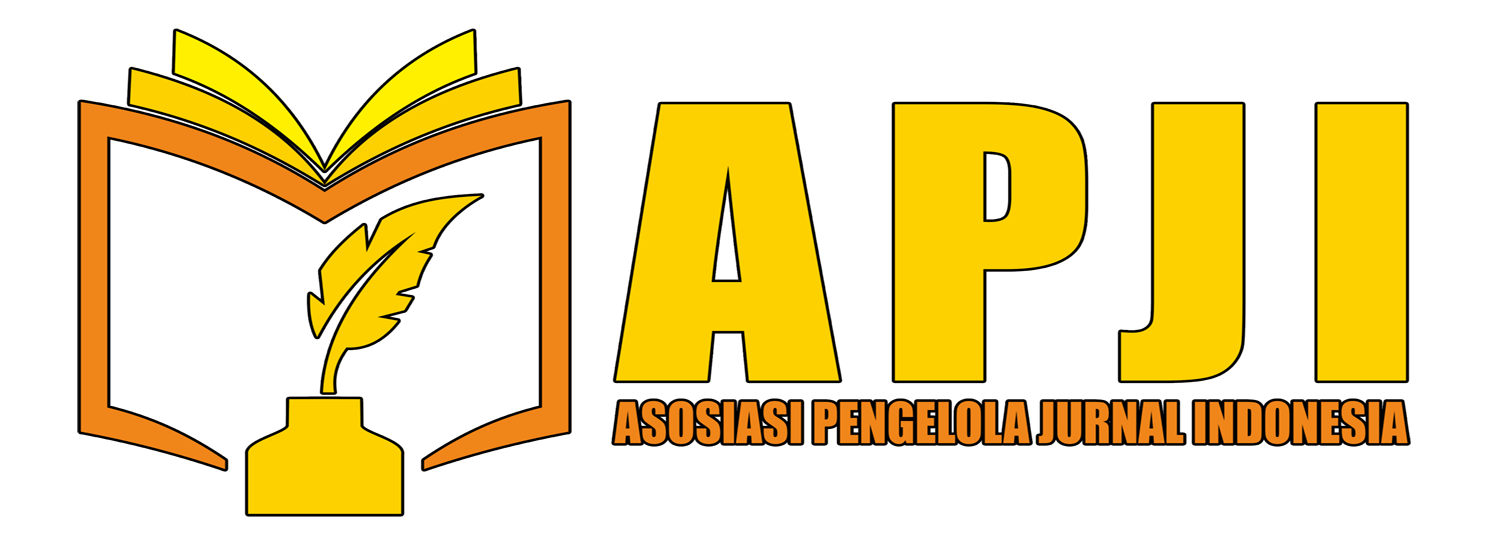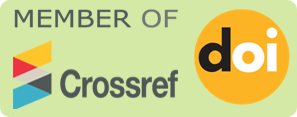OPTIMIZING INCISION DEPTH IN SUNNAH CUPPING THERAPY FOR SAFETY AND THERAPEUTIC EFFICACY
DOI:
https://doi.org/10.62567/micjo.v2i2.685Keywords:
dermis targeting in cupping, incision depth standards, safety in cupping techniques, therapeutic efficacy of cupping, training for cupping therapistsAbstract
This study aims to evaluate the impact of incision depth in Sunnah cupping therapy on safety and therapeutic efficacy, with a focus on identifying the optimal incision depth that minimizes risks while maximizing therapeutic benefits. The method used is a literature review, gathering data from scientific databases such as PubMed, Scopus, and Google Scholar using keywords related to cupping therapy, incision depth, and dermatological aspects. The findings reveal that an incision depth of 0.5 mm to 1 mm in the dermis layer not only avoids damage to the deeper hypodermis but is also sufficient for the effective extraction of stagnant blood. This very light incision provides advantages in enhancing blood circulation and facilitating the extraction of stagnant blood necessary in cupping therapy. This approach, involving extremely light incisions, cannot be considered invasive and is highly suitable for enhancing therapy efficacy without compromising patient safety. Further discussion in the study highlights that with the correct incision technique, cupping therapy can become safer and more effective, encouraging significant improvements in immune response and tissue regeneration. The conclusion of this study underscores the importance of standardizing procedures and adequate training for cupping practitioners to ensure safe and effective practices. Further research is recommended to strengthen the evidence related to the effectiveness and safety of cupping therapy and to develop more detailed standard protocols.
Downloads
References
Aboushanab, T. and Alsanad, S. (2021). Cupping therapy (hijama) in the arab world., 1845-1864. https://doi.org/10.1007/978-3-030-36811-1_176
AlBedah, A., Elsubai, I., Qureshi, N., Aboushanab, T., Ali, G., El-Olemy, A., … & Alqaed, M. (2019). The medical perspective of cupping therapy: effects and mechanisms of action. Journal of Traditional and Complementary Medicine, 9(2), 90-97. https://doi.org/10.1016/j.jtcme.2018.03.003
Alkhamaiseh, S., Bazzari, A., Jafari, A., & Bazzari, F. (2023). The public perceptions on wet cupping therapy (hijama) in saudi arabia. Journal of Acupuncture and Meridian Studies, 16(5), 176-182. https://doi.org/10.51507/j.jams.2023.16.5.176
Almaiman, A. (2018). Proteomic effects of wet cupping (al-hijamah). Saudi Medical Journal, 39(1), 10-16. https://doi.org/10.15537/smj.2018.1.21212
AlMusleh, Z. and Ansari, W. (2020). Integrating cupping therapy in the management of sudden sensorineural hearing loss: a case report. Cureus. https://doi.org/10.7759/cureus.7063
Alshareef, A., Albeladi, A., Alsaedi, A., Alnakhli, A., & AlHejili, R. (2021). Public perceptions of cupping therapy (hijama) and whether it will be chosen over donating blood. Journal of Complementary and Alternative Medical Research, 30-35. https://doi.org/10.9734/jocamr/2020/v12i230205
Al‐Yousef, H., Syed, W., & Sales, I. (2018). Knowledge, attitudes, and perceptions of cupping therapy (ct) in saudi arabia-a cross-sectional survey among the saudi population. Biomedical Research, 29(17). https://doi.org/10.4066/biomedicalresearch.29-18-1015
Amiruddin, M., Syafitri, L., Rabbani, A., Muthmainnah, A., & Salsabila, A. (2022). The benefits of removing dirty blood with traditional cupping treatment. planar, 2, 60. https://doi.org/10.18860/planar.v2i0.2127
Andi, S. and Setyawan, A. (2022). The effectiveness of wet cupping therapy against menstrual pain (dysmenorrhea) on college student nursing of stikes surya global yogyakarta. International Journal of Islamic and Complementary Medicine, 3(1), 35-41. https://doi.org/10.55116/ijicm.v3i1.37
Andrian, A. (2023). Cupping therapy in reducing blood pressure in patients with hypertension: a literature study. Asian Australasian Neuro and Health Science Journal (Aanhs-J), 5(2), 34-47. https://doi.org/10.32734/aanhsj.v5i2.11846
Aprilyadi, N. and Zuraidah, Z. (2022). Efektivitas terapi bekam dan bekam plus murrotal terhadap penurunan tekanan darah pada penderita hipertensi di puskesmas simpang periuk kota lubuklinggau tahun 2020. JKM Jurnal Keperawatan Merdeka, 2(1), 96-101. https://doi.org/10.36086/jkm.v2i1.1306
Arai, Y., Aono, S., Makino, I., Nishihara, M., Ikemoto, T., & Owari, K. (2017). Observational study of the association between tongue exam and the kampo diagnostic procedure of fuku shin (abdominal exam) in blood stasis. Journal of Evidence-Based Complementary & Alternative Medicine, 22(4), 879-882. https://doi.org/10.1177/2156587217716215
Astuti, D. (2019). Efektifitas bekam basah pada pasien hipertensi: systematic review. Indonesian Journal of Nursing Research (Ijnr), 1(2). https://doi.org/10.35473/ijnr.v1i2.180
Azizpour, A., Nasimi, M., Shokoei, S., Mohammadi, F., & Azizpour, A. (2018). Bullous pemphigoid induced by hijama therapy (cupping). Dermatology Practical & Conceptual, 8(3), 163-165. https://doi.org/10.5826/dpc.0803a01
Boer, M., Duchnik, E., Maleszka, R., & Marchlewicz, M. (2016). Structural and biophysical characteristics of human skin in maintaining proper epidermal barrier function. Advances in Dermatology and Allergology, 1, 1-5. https://doi.org/10.5114/pdia.2015.48037
Bojanowski, K., Ma, S., Applebaum, R., & Zhao, H. (2020). Transbuccal platform for delivery of lipogenic actives to facial skin: because fat matters. Journal of Tissue Engineering and Regenerative Medicine, 14(8), 1169-1174. https://doi.org/10.1002/term.3087
Boyce, S. and Lalley, A. (2018). Tissue engineering of skin and regenerative medicine for wound care. Burns & Trauma, 6. https://doi.org/10.1186/s41038-017-0103-y
Candrawati, S. and Sukraandini, N. (2021). Pengaruh terapi bekam kering terhadap tekanan darah pada pasien hipertensi primer. Bali Medika Jurnal, 8(1), 90-98. https://doi.org/10.36376/bmj.v8i1.161
Dermitzakis, I., Kyriakoudi, S., Chatzianagnosti, S., Chatzi, D., Vakirlis, E., Meditskou, S., … & Theotokis, P. (2025). Epigenetics in skin homeostasis and ageing. Epigenomes, 9(1), 3. https://doi.org/10.3390/epigenomes9010003
Dalton, E. and Velasquez, B. (2017). Cupping therapy: an alternative method of treating pain. Public Health - Open Journal, 2(2), 59-63. https://doi.org/10.17140/phoj-2-122
El-Olemy, A., Al-Bedah, A., Almosilhi, A., Almusailhi, J., Hussein, A., Khalil, M., … & Qureshi, N. (2017). Cupping therapy (al-hijamah): an exploratory study of healthcare professionals controversial beliefs and conceptions, kingdom of saudi arabia. Journal of Complementary and Alternative Medical Research, 3(2), 1-11. https://doi.org/10.9734/jocamr/2017/34835
El‐Shanshory, M., Hablas, N., Shebel, Y., Fakhreldin, A., Attia, M., Almaramhy, H., … & Sayed, S. (2018). Al-hijamah (wet cupping therapy of prophetic medicine) significantly and safely reduces iron overload and oxidative stress in thalassemic children: a novel pilot study. Journal of Blood Medicine, Volume 9, 241-251. https://doi.org/10.2147/jbm.s170523
Ghazy, E., Muhayawi, S., Mourad, S., & Alahdal, R. (2018). Comparison of safety and efficacy of al-hijama (cupping) and conventional medical therapy for sinusitis (i). Journal of King Abdulaziz University-Medical Sciences, 25(2), 11-26. https://doi.org/10.4197/med.25-2.2
Gonzalez-Bravo, A., Montero‐Vílchez, T., Arias‐Santiago, S., & Buendía‐Eisman, A. (2022). The effect of sunscreens on the skin barrier. Life, 12(12), 2083. https://doi.org/10.3390/life12122083
Helma, H., Yaswir, R., & Lillah, L. (2018). Pengaruh terapi bekam terhadap kadar kolesterol total. Jurnal Kesehatan Andalas, 7, 50. https://doi.org/10.25077/jka.v7i0.876
Henn, D., Chen, K., Maan, Z., Greco, A., Illouz, S., Bonham, C., … & Gurtner, G. (2020). Cryopreserved human skin allografts promote angiogenesis and dermal regeneration in a murine model. International Wound Journal, 17(4), 925-936. https://doi.org/10.1111/iwj.13349
Herman, H., Jumatrin, N., Budianti, A., Nurita, N., & Awalia, P. (2024). Pengaruh terapi bekam basah terhadap skala nyeri dismenore pada wanita usia subur dengan infertilitas di kota kendari. Health Information Jurnal Penelitian, 16(2), e1459. https://doi.org/10.36990/hijp.v16i2.1459
Hou, X., He, X., Zhang, X., Liao, F., Hung, I., & Jan, Y. (2020). Using laser doppler flowmetry with wavelet analysis to study skin blood flow regulations after cupping therapy. Skin Research and Technology, 27(3), 393-399. https://doi.org/10.1111/srt.12970
Jaouni, S., El-Fiky, E., Mourad, S., Ibrahim, N., Kaki, A., Rohaiem, S., … & Aljawhari, A. (2017). The effect of wet cupping on quality of life of adult patients with chronic medical conditions in king abdulaziz university hospital. Saudi Medical Journal, 38(1), 53-62. https://doi.org/10.15537/smj.2017.1.15154
Jeni, L., Tahiruddin, T., & Rosjidi, C. (2023). The effectiveness of wet cupping complementary therapy to decrease blood pressure in hypertension patients at kolaka. Klasics, 3(02), 23-32. https://doi.org/10.46233/klasics.v3i02.1025
Kim, S., Kim, E., Jung, G., Lee, S., & Kim, J. (2019). The hemodynamic changes during cupping therapy monitored by using an optical sensor embedded cup. Journal of Biophotonics, 12(5). https://doi.org/10.1002/jbio.201800286
Lee, H., Lee, H., Kim, G., Choi, J., & Hong, J. (2019). Plasma cupping induces vegf expression in skin cells through nitric oxide-mediated activation of hypoxia inducible factor 1. Scientific Reports, 9(1). https://doi.org/10.1038/s41598-019-40086-8
Lilin, L. (2024). Evaluation of complementary cupping therapy in the management of hypertension and triglyceride levels in coastal fishermen communities. Public Health of Indonesia, 10(2), 237-246. https://doi.org/10.36685/phi.v10i2.806
Lu, M., Yang, C., Tsai, S., Hung, C., & Chen, S. (2020). Intraperitoneal hemorrhage after cupping therapy. Hong Kong Journal of Emergency Medicine, 27(2), 107-109. https://doi.org/10.1177/1024907918784076
Mohandes, B., Bayoumi, F., AllahDiwaya, A., Falah, M., Alhamd, L., Alsawadi, R., … & Jihwaprani, M. (2024). Cupping therapy for the treatment of migraine headache: a systematic review and meta-analysis of clinical trials. Journal of Pharmacopuncture, 27(3), 177-189. https://doi.org/10.3831/kpi.2024.27.3.177
Muhtar, M. (2022). Tibbun nabawi (bekam) dan kontra indikasi dalam perspektif hadis. Al-Manar Jurnal Kajian Alquran Dan Hadis, 8(2), 89-102. https://doi.org/10.35719/amn.v8i2.14
Munoz, L., Sweeney, M., & Jameson, J. (2020). Skin resident γδ t cell function and regulation in wound repair. International Journal of Molecular Sciences, 21(23), 9286. https://doi.org/10.3390/ijms21239286
Mushtaq, A., Bilal, M., & Hussein, E. (2024). An exploratory study: controversial beliefs and practices of hijama practitioners of karachi, pakistan. European Journal of Theoretical and Applied Sciences, 2(6), 131-143. https://doi.org/10.59324/ejtas.2024.2(6).10
Orsmond, A., Bereza-Malcolm, L., Lynch, T., March, L., & Xue, M. (2021). Skin barrier dysregulation in psoriasis. International Journal of Molecular Sciences, 22(19), 10841. https://doi.org/10.3390/ijms221910841
Park, B., You, S., Jung, J., Lee, J., Yun, K., & Lee, M. (2015). Korean studies on blood stasis: an overview. Evidence-Based Complementary and Alternative Medicine, 2015, 1-7. https://doi.org/10.1155/2015/316872
Rahman, H., Ahmad, G., Mustapha, B., Al-Rawi, H., Hussein, R., Amin, K., … & Abdullah, R. (2020). Wet cupping therapy ameliorates pain in patients with hyperlipidemia, hypertension, and diabetes: a controlled clinical study. International Journal of Surgery Open, 26, 10-15. https://doi.org/10.1016/j.ijso.2020.07.003
Ren, X., Getschman, A., Hwang, S., Volkman, B., Klonisch, T., Levin, D., … & Lin, F. (2021). Investigations on t cell transmigration in a human skin-on-chip (soc) model. Lab on a Chip, 21(8), 1527-1539. https://doi.org/10.1039/d0lc01194k
Risniati, Y., Afrilia, A., Lestari, T., Nurhayati, N., & Siswoyo, H. (2020). Pelayanan kesehatan tradisional bekam: kajian mekanisme, keamanan dan manfaat. Jurnal Penelitian Dan Pengembangan Pelayanan Kesehatan, 212-225. https://doi.org/10.22435/jpppk.v3i3.2658
Sajid, M. (2016). Hijama therapy (wet cupping) – its potential use to complement british healthcare in practice, understanding, evidence and regulation. Complementary Therapies in Clinical Practice, 23, 9-13. https://doi.org/10.1016/j.ctcp.2016.01.003
Sobali, A., Azmi, A., Ismail, M., & Nor, Z. (2021). Upah bekam dan kadarnya: tinjauan daripada perspektif hadis. Journal of Hadith Studies. https://doi.org/10.33102/johs.v3i2.57
Stephens, S., Selkow, N., & Hoffman, N. (2020). Dry cupping therapy for improving nonspecific neck pain and subcutaneous hemodynamics. Journal of Athletic Training, 55(7), 682-690. https://doi.org/10.4085/1062-6050-236-19
Subadi, I., Nugraha, B., Suwandi, A., Sulastri, N., & Susilo, I. (2020). Pain reduction after wet and dry cupping therapies: roles of α2β1 integrin and μ-opioid receptor in animal models. International Journal of Psychosocial Rehabilitation, 24(02), 4030-4035. https://doi.org/10.37200/ijpr/v24i2/pr200722
Sucipto, A., Fadlilah, S., & Muflih, M. (2023). Terapi bekam basah guna memperbaiki status hemodinamik pada pasien hipertensi. Faletehan Health Journal, 10(02), 115-120. https://doi.org/10.33746/fhj.v10i02.446
Sung, J., Kim, J., Lee, J., Lee, Y., & Lee, S. (2021). Multiple facial candidal abscesses after self-administered acupuncture in a patient with undiagnosed diabetes mellitus: a case report. BMC Complementary Medicine and Therapies, 21(1). https://doi.org/10.1186/s12906-021-03343-w
Surahmat, R. and Damayanti, N. (2019). Pengaruh terapi bekam dalam menurunkan tekanan darah pada pasien hipertensi di rumah bekam palembang. Majalah Kedokteran Sriwijaya, 49(1), 43-49. https://doi.org/10.32539/mks.v49i1.8323
Usman, S., Badar, F., Collado, C., Weber, A., & Kaell, A. (2023). Septic shock from pan-spinal epidural abscess attributed to recent acupuncture and trigger point injections for acute lower back pain in a previously undiagnosed diabetic patient: a case report. Cureus. https://doi.org/10.7759/cureus.40088
Wang, X., Zhang, X., Elliott, J., Liao, F., Tao, J., & Jan, Y. (2020). Effect of pressures and durations of cupping therapy on skin blood flow responses. Frontiers in Bioengineering and Biotechnology, 8. https://doi.org/10.3389/fbioe.2020.608509
Xing, M., Ding, X., Zhang, J., Kuai, L., Ru, Y., Sun, X., … & Li, X. (2020). Moving cupping therapy for plaque psoriasis. Medicine, 99(41), e22539. https://doi.org/10.1097/md.0000000000022539
Xu, M., Yang, C., Nian, T., Tian, C., Zhou, L., Wu, Y., … & Yang, K. (2023). Adverse effects associated with acupuncture therapies: an evidence mapping from 535 systematic reviews. Chinese Medicine, 18(1). https://doi.org/10.1186/s13020-023-00743-7
Zhou, H., You, C., Wang, X., Jin, R., Wu, P., Li, Q., … & Han, C. (2017). The progress and challenges for dermal regeneration in tissue engineering. Journal of Biomedical Materials Research Part A, 105(4), 1208-1218. https://doi.org/10.1002/jbm.a.35996
Downloads
Published
How to Cite
Issue
Section
License
Copyright (c) 2025 Andik Isdianto, Novariza Fitrianti

This work is licensed under a Creative Commons Attribution-ShareAlike 4.0 International License.


















